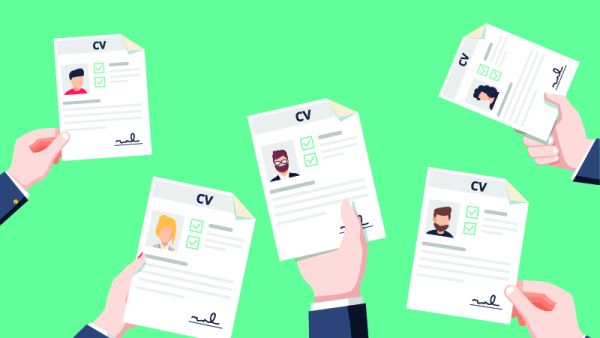As the job market gets more and more competitive, applying for a job gets increasingly tricky. Individuals confident about their skills and qualifications are hardly noticed without an extra effort, one that usually starts with drafting a distinguished document through which they introduce themselves and land an in-person interview.
#Resume vs. #CV - What's the Difference?
— Delia Caluser (@RoITFocus) February 24, 2020
Resume:
✅ Are used by job seekers like a marketing tool.
✅ Length: 1-2 pages long
CV:
✅ Purpose: To focus on academic careers
✅ Showcase credentials: Certificates, research/academic experience, awards, etc.
✅ Length: No limitation
While it may sound as the easiest part of the job application process, writing a winning resume can be a very challenging task, because job applicants need to promote their best skills and achievements to people who have never met them.
Here we are going to outline the main points that need to be covered in a winning CV to receive a call back for an interview, where you can impress the employer and secure the job.
1. Keep it short
Individuals in charge of examining job applications and filtering them are usually tasked with reviewing numerous resumes, which makes it more challenging to fairly evaluate longer ones.
Additionally, you want to leave some details to be discussed during the interview you, so you have the opportunity to speak about your qualifications and skills beyond what the document mentions.
2. Contact information
Make sure you clearly include all of your up-to-date contact information, so the potential employer either calls or emails you for an interview.
Using your workplace email address on your resume or to communicate during your job search is not cool, and it may also get you fired.
— Jack Young (@Recruiter) June 16, 2010
In addition to your cell phone number, remember to include a formal and personal email address with your name and maybe some numbers. Avoid nicknames even the cooler ones, and avoid using the email address linked to your current employer's domain.
I'm all for your cool email address, but perhaps you should avoid putting "romeo_thc@..." on your resume.
— EK (@EricKennedyATX) January 28, 2010
Moreover, make your current residence location clear, but not too specific. You don't have to mention the neighborhood or the street name, only the city would be helpful to the employers who should take your effort to relocate if chosen for the job into consideration.
3. Reverse chronological order
Since your experiences are more relevant the more recent they are, start by listing your latest or current professional experience before highlighting older ones.
The same goes for educational qualifications, add your highest and most recent degree first.
4. Professional design
I realize there are plenty of vibrant and unconventional resume templates on the internet, and they are very tempting to use.
However, think of the career world as a traditional old one, where the simplest more formal designs are still very valuable. This applies to readable very clear fonts, colors derived from the darker side of the palette; such as blue, green, grey, and others.
For those wondering what a media kit is, they're essentially resumes that showcase your engagement and statistics across your social media platforms. The app Canva has a ton of templates and you can edit them right from your phone. pic.twitter.com/eNN4BtJM3m
— tarabusi creek (@tarabusicreek) March 16, 2019
There are only a few cases where you can get creative with your designs: if you're a designer.
5. Resume summary
Start your resume with a brief summary of your educational and professional backgrounds, your professional interests, your goals, and what you are looking for. If you speak more than one language, this is the time to highlight this fact.
This summary doesn't need to be longer than three to four lines that highlight your experience.
6. Relevant experience only
If you have previously worked in different unrelated fields, employers will really only care about experiences that are relevant to theirs, ones that show how you've learned skills needed for the job you're applying for.
Avoid adding everything to your resume, and keep only past roles with connection to the one you're considering now.
7. Not responsibilities, but achievements
When listing past experiences, most people tend to add three to four tasks they were responsible for during their tenures.
Nowadays, it makes a stronger case helping your resume stand out, if you added the achievements you have finished during the time of your service, as job responsibilities can be obviously-related to the job title.
8. No personal information
Try to keep things as professional as possible. Try to avoid writing your date of birth, your marital status, your hobbies, or any other non-career related information.
In most professional settings, it's increasingly frowned upon to bring such information up during the hiring process, as it could drive biases against certain groups of people.
Only researched as far as Google's featured snippet, but this is what it says "A resume is a one page summary of your work experience and background relevant to the job you are applying to. A CV is a longer academic diary that includes all your experience, certificates...."
— Vinay Aravind ? (@vinayaravind) September 18, 2020
9. Sequence
You can title the document with your first and last name as mentioned in your official documents, before contact information, the resume summary, education, and past professional experiences, including volunteer ones.
10. No references anymore
While past CVs used to end with a few names and phone numbers connecting the employer to people who have worked with you, it is no longer necessary to neither write these details now nor to say that "references are available upon request."
Many companies will have you fill in this information later on as you receive forms prior to or following an interview.
Bonus: You can add a link to your LinkedIn account, details on standardized test scores, and additional courses you have already finished if you think they support your chances of being scheduled for an in-person interview.







